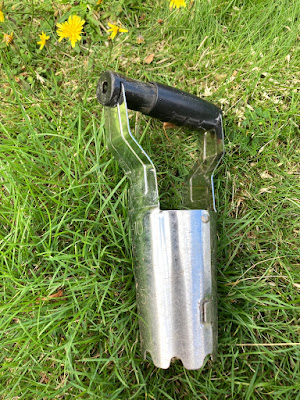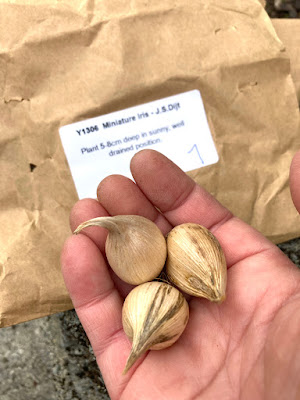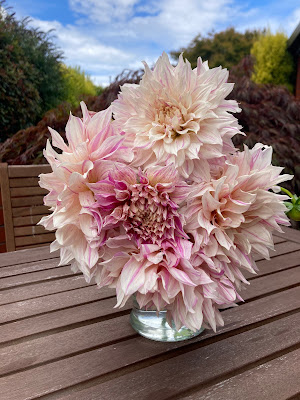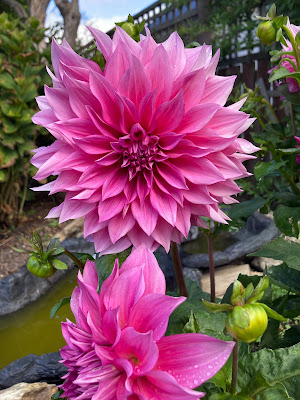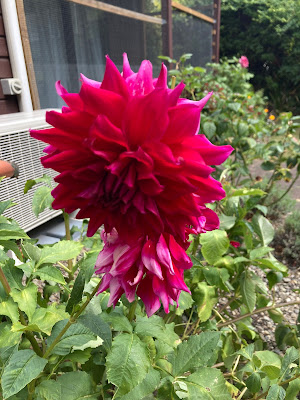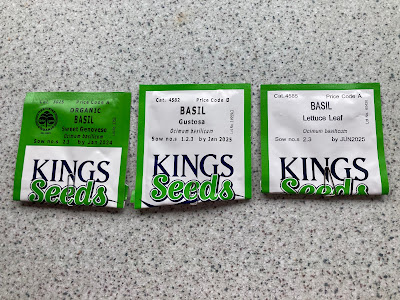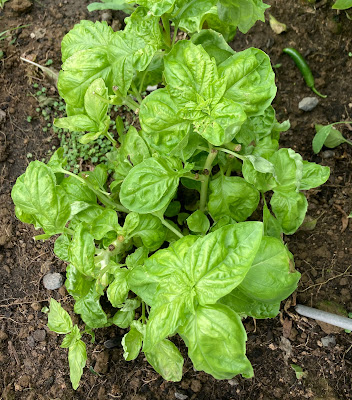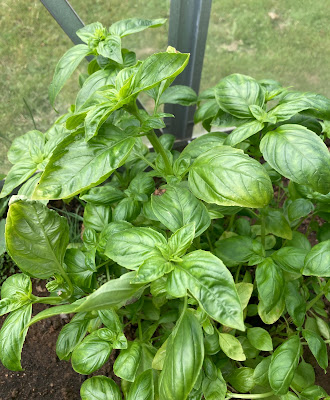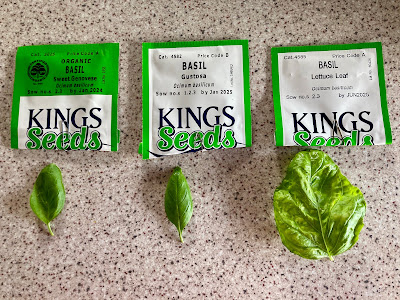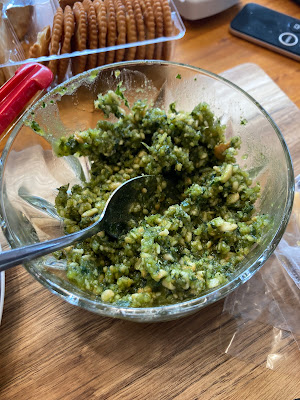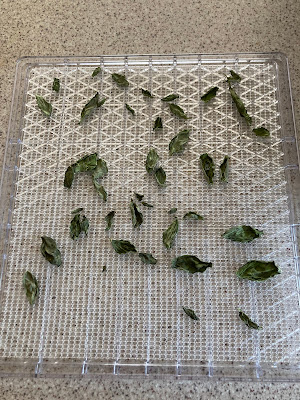Hello Friends,
We love eating basil, whether it be fresh in salads or pesto in summer, or dehydrated to add to dishes in winter, so back in the winter of 2022, I added three different types of basil seeds to my Kings seeds order. As I have a PhD in plant biochemistry, I'm always up for experimenting with new plants to see how they grow and what their harvests are like.
The three varieties of basil I chose were, Organic Basil Sweet Genovese, Basil Gustosa, and Basil Lettuce Leaf. Sweet Genovese is the basil everyone usually thinks of when it comes to pesto, and also for eating fresh. This basil tastes fresh and clean, and grows well in a glasshouse, and is the type I've grown for years. Basil Gustosa is also a Sweet Genovese type, but was bred for growing commercially in pots with vigorous growth and good disease resistance. Basil Lettuce Leaf is the strongest growing and most highly prolific of all basil varieties. The leaves are twice as large as normal basil leaves, and the leaves themselves are crinkly.
I sowed all the basil varieties in mid-September and grew them up in the glasshouse in pots until October when they were dug into the glasshouse soil.
The basil plants all grew strong and healthy. There was little difference in growth between the Sweet Genovese and Gustosa basil varieties, and they looked similar. The Basil Lettuce Leaf had leaves much bigger than the other two varieties, were lighter in colour, and they were very crinkly. During its growth the Basil Lettuce Leaf was attacked by caterpillars, where as the Sweet Genovese and Gustosa were not.
It wasn't long before our first basil harvest was picked.Of the three basil varieties, Sweet Genovese basil was the most like the common basil grown and eaten. It had a sweet taste that wasn't too overpowering. The Gustosa leaves were similar in size to the Sweet Genovese basil, but it's taste was a little more peppery than Sweet Genovese. The Lettuce Leaf basil's leaves were much bigger, and had a slight aniseed taste.
We made a batch of pesto by combining all the basil types, and as you can imagine it was delicious. Because of how expensive pine nuts are, we usually use Mother Earth Slightly Salted Cashew Nuts in our pesto. We only buy them when they're on special, and they are salty enough that no extra salt is needed to make the pesto.
The bulk of our basil crop is dehydrated in our dehydrator for later use in the colder months. We bought our Sunbeam FoodLab Dehydrator in August 2022, and have used it nearly every day since then for drying herbs, flowers, fruit, and vegetables. We couldn't live without it now that we own one. We also bought some accessories for it online, so that we have more finer trays for herbs, and also more silicone non-stick sheets for making fruit leather.
Basil is dried in our dehydrator at 35˚C for a number of hours. It is ready when the leaves snap after they have been cooled to room temperature. After that they are stored in a glass container for 48 hours to check no further water has been released into the container.
When we dried all three varieties of basil in the dehydrator, both Sweet Genovese and Gustosa dried quickly. The Lettuce Leaf basil however, took a long time to dry as its leaves contained much more water than the other two varieties.
After the basil is dried I ground all the basil varieties together using our Breville Coffee and Spice Grinder. It is designed for grinding all sorts of herbs, spices, and also coffee, and we bought it online when someone was having a sale.
After experimenting with all these basil varieties over the Spring and Summer, I have decided that in future seasons I wish to grow only the Sweet Genovese and Gustosa varieties. Even though they do not have big leaves like the Lettuce Leaf Basil, they still have good plant growth, and are resistant to caterpillar attack. They also dry fast in the dehydrator, which is what we harvest most of our basil for. The mix of the two varieties also brings a good combination in terms of taste, so that's also a bonus.
I am having sinus surgery this Friday (17th March), and will be recovering for a couple of weeks, but have already prepared next weeks blog post for you.
Have a wonderful day,
Julie-Ann



